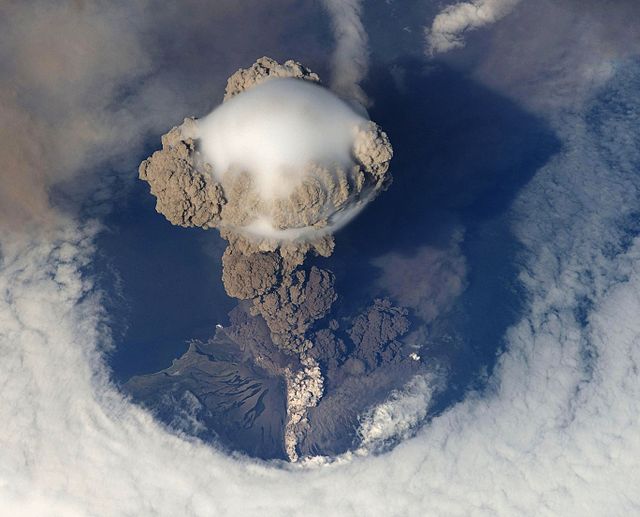In volcanology, an explosive eruption is a volcanic eruption of the most violent type. A notable example is the 1980 eruption of Mount St. Helens. Such eruptions result when sufficient gas has dissolved under pressure within a viscous magma such that expelled lava violently froths into volcanic ash when pressure is suddenly lowered at the vent. Sometimes a lava plug will block the conduit to the summit, and when this occurs, eruptions are more violent. Explosive eruptions can expel as much as 1,000 kg (2,200 lb) per second of rocks, dust, gas and pyroclastic material, averaged over the duration of eruption, that travels at several hundred meters per second as high as 20 km (12 mi) into the atmosphere. This cloud may subsequently collapse, creating a fast-moving pyroclastic flow of hot volcanic matter.
Mount St. Helens explosive eruption on May 18, 1980
Eruption of Mount Pinatubo in the Philippines on June 12, 1991 (PST). Its ash would spread as far west as mainland South East Asia.
An early stage of the July 12, 2009, eruption of Sarychev volcano, seen from space
Types of volcanic eruptions
Several types of volcanic eruptions—during which material is expelled from a volcanic vent or fissure—have been distinguished by volcanologists. These are often named after famous volcanoes where that type of behavior has been observed. Some volcanoes may exhibit only one characteristic type of eruption during a period of activity, while others may display an entire sequence of types all in one eruptive series.
Some of the eruptive structures formed during volcanic activity (counterclockwise): a Plinian eruption column, Hawaiian pahoehoe flows, and a lava arc from a Strombolian eruption
Ropey pahoehoe lava from Kilauea, Hawaiʻi
An example of the lava arcs formed during Strombolian activity. This image is of Stromboli itself.
Tavurvur in Papua New Guinea erupting







